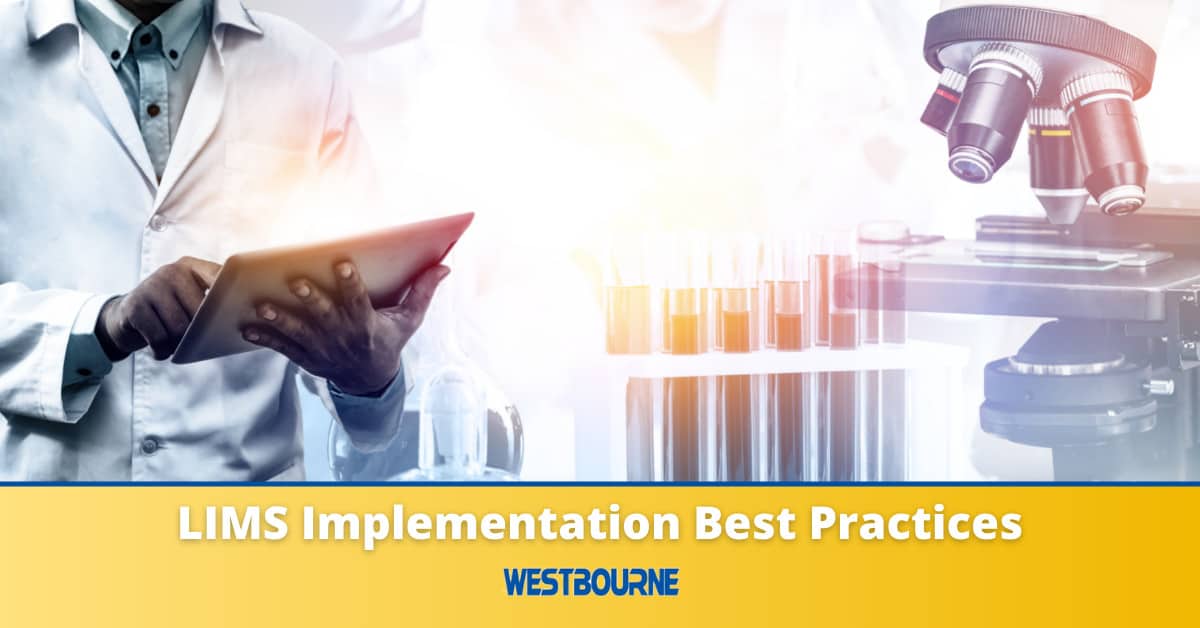Best Practices to Ensure a Successful LIMS Implementation

Your lab produces data from a range of sources. Some of that data might be manually stored and processed on a spreadsheet, while other elements end up in silos with minimal integration. A LIMS solution will help solve these problems, but how do you ensure a successful implementation that delivers a return on investment?
The goal of a LIMS implementation project is to transition to new data processes and workflows as seamlessly as possible while ensuring your lab team has everything it needs.
It is also important the project is completed within budget and on time, both for ROI and operational reasons.
LIMS Implementation Best Practices
We have defined eight best practices to ensure a successful LIMS implementation:
- Define objectives
- Define requirements
- Get expert help
- Business case development
- Organiational buy-in
- Planning
- Training
- Software verification (optional)
We can look at each in more detail.
Define Your Objectives
The starting point with any LIMS implementation should always be understanding why you are doing it and what you want to achieve. When going through this stage, make sure your LIMS objectives are aligned with the overall objectives of the lab.
Define the Main Requirements
Once you understand your objectives, you can then define the main requirements you need from the LIMS solution. To do this, you will need a full understanding of the processes and workflows in your lab.
The main requirements for a LIMS solution are likely to cover the needs of the business and lab users, as well as data management, compliance, and IT requirements.
It is also important to get a clear picture of the data types and formats the LIMS will need to capture, store, and process. Never make assumptions with this part of the process, as something as simple as the character limit in a data column can cause major headaches post-implementation.
When defining the requirements, it’s important to ensure you don’t overcomplicate the software to the point where a lot of customizations are required. A better approach is to focus initially on the main requirements. Once that is successfully implemented, you can then add additional capabilities.
Get Expert Help
Assessing and deciding on the right LIMS platform is a complex process, as is the process of implementing the LIMS. Therefore, getting expert help is usually the best approach. Ideally, you should aim to achieve a good blend of internal and external resources.
An expert third-party will provide you with independent advice on the various LIMS solutions that are available. At Westbourne, for example, we are system agnostic, so we are not tied to any specific vendor. Our independence in the LIMS implementation process means we can be solely focused on protecting your interests.
We also offer advice on things like workflow optimization, hardware compatibility, software compatibility, systems integration, data security, and more.
An experienced and knowledgeable third-party provider will also have the expertise to manage the process of developing customizations for your new LIMS. Again, we can use Westbourne as an example, as we have LabWare LIMS developers and BIOVIA SmartLab scripters on our team, in addition to support and admin staff with specific knowledge of these platforms and many others.
Develop a Business Case
A business case is usually required to get sign-off on the funds needed to invest in the LIMS. As a result, it is important to focus on the benefits for the lab and wider company in the business case, plus it’s essential you demonstrate ROI.
Get Buy-In Across the Organization
Getting buy-in from key people in the C-suite (CIO, CFO, CTO, etc) is essential for getting budget approval. C-suite buy-in is also crucial during the implementation process.
However, it is also important to get buy-in throughout the organization, especially from those impacted most by the LIMS implementation. This will primarily be the people who will see their workflows and processes change as a result of the new system.
Ensure a Carefully Planned Implementation
An experienced LIMS implementation project manager will ensure effective project controls while also managing workflow development, stakeholder involvement, governance, and project timelines.
The implementation plan should include a risk management plan. Data migration and testing should be included in the plan, too, with sufficient time allocated to both. In most situations, it is also beneficial to migrate data early in the implementation process, rather than waiting until after the system has been configured and tested.
It is also beneficial to plan for unforeseen circumstances.
Furthermore, make sure the LIMS implementation plan is properly communicated to everyone involved. This communication should include things like when lab systems will be offline and when the new LIMS can be used. Data backup processes should also be outlined, as should testing and verification processes.
Make Sure Users are Properly Trained and Have Support
Training is important to ensure users become proficient in using the LIMS. Training is also often an important part of the User Acceptance Testing process, as users can identify bugs and workflow issues during training.
If Required, Go Through a Software Verification Process
Depending on the regulatory requirements of your lab, you might need to go through a software verification process. If this process is required, it is best to begin working on it during the early phases of the LIMS implementation, as accurate documentation is essential.
Get the Support and Help You Need
Implementing a LIMS application in your lab will bring a range of benefits, from automating workflows to improving lab operations to reducing human error. That said, LIMS implementation projects are a significant undertaking, so it is important you get the best support, advice, and practical assistance. We can offer all this and more at Westbourne.
A good example is the last point on this list – software validation and verification. Our team has extensive experience providing this service to labs.
Whatever your requirements, and wherever you are on your LIMS implementation journey, get in touch to arrange a free consultation with one of our experts.
Latest Insights
A Complete Guide to Computer System Validation
Computer System Validation, or CSV, is a modern, risk-based methodology that confirms software used in pharmaceutical operations functions as intended. The risk-based approach is based on critical thinking. CSV has applied to the pharmaceutical industry for many...
Why Multidisciplinary Skills Are Essential in Pharma Lab and Manufacturing Operations
Very specific skills are required to successfully, safely, and profitably run a pharmaceutical manufacturing and...
How On-Site IT Engineers Become Enablers in Your Organisation
There are many technical issues and tasks that can be supported by remote teams. Others, however, require the physical...
Technology-Focused Scientific Career Progression Pathways in the Pharmaceutical Industry
The pharmaceutical industry is changing with the introduction of advanced methodologies and the greater use of new...
Maximizing Pharmaceutical Digital Transformation ROI
Digital transformation is changing the way pharmaceutical companies run their businesses, manufacture products, and...

